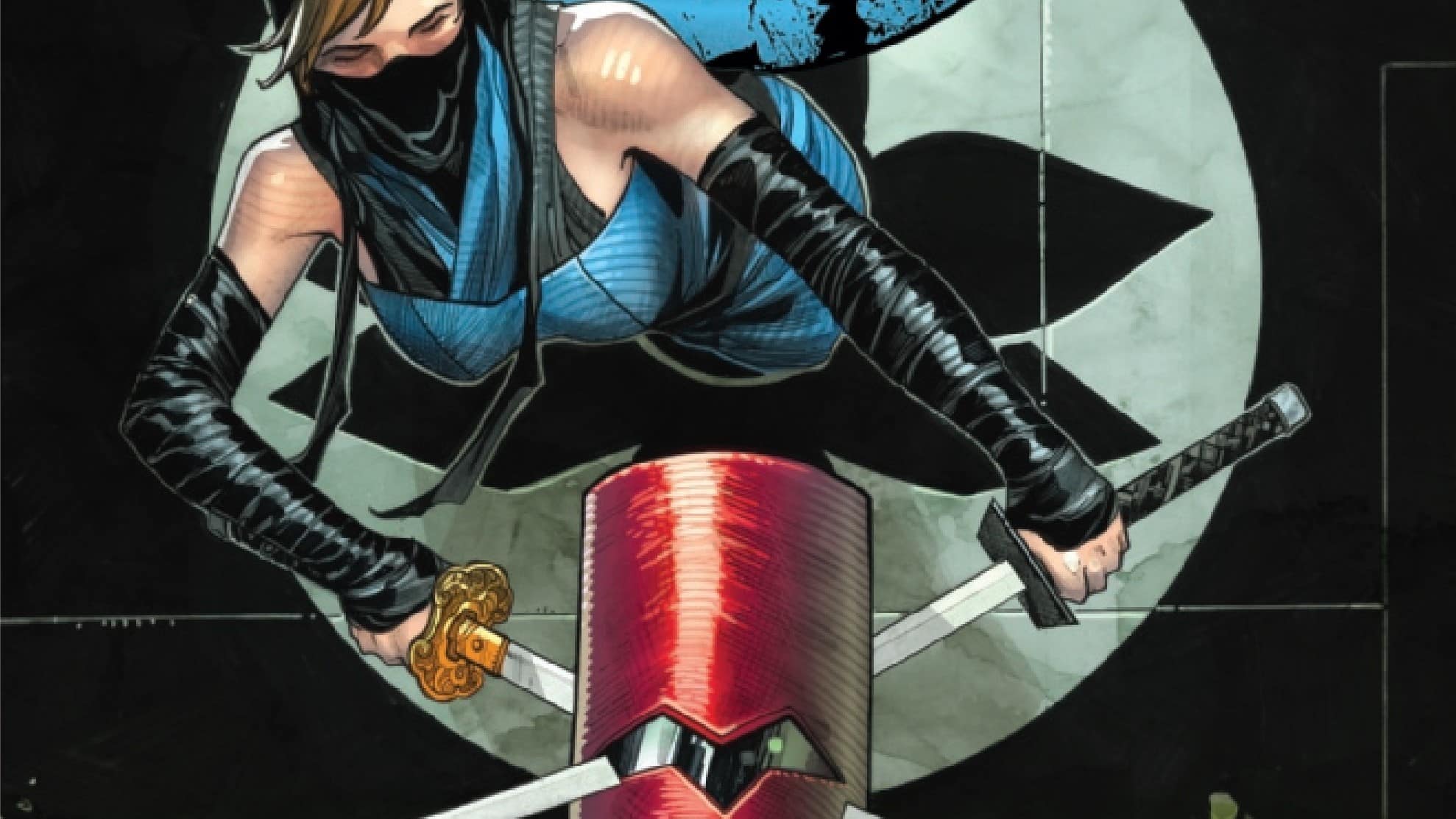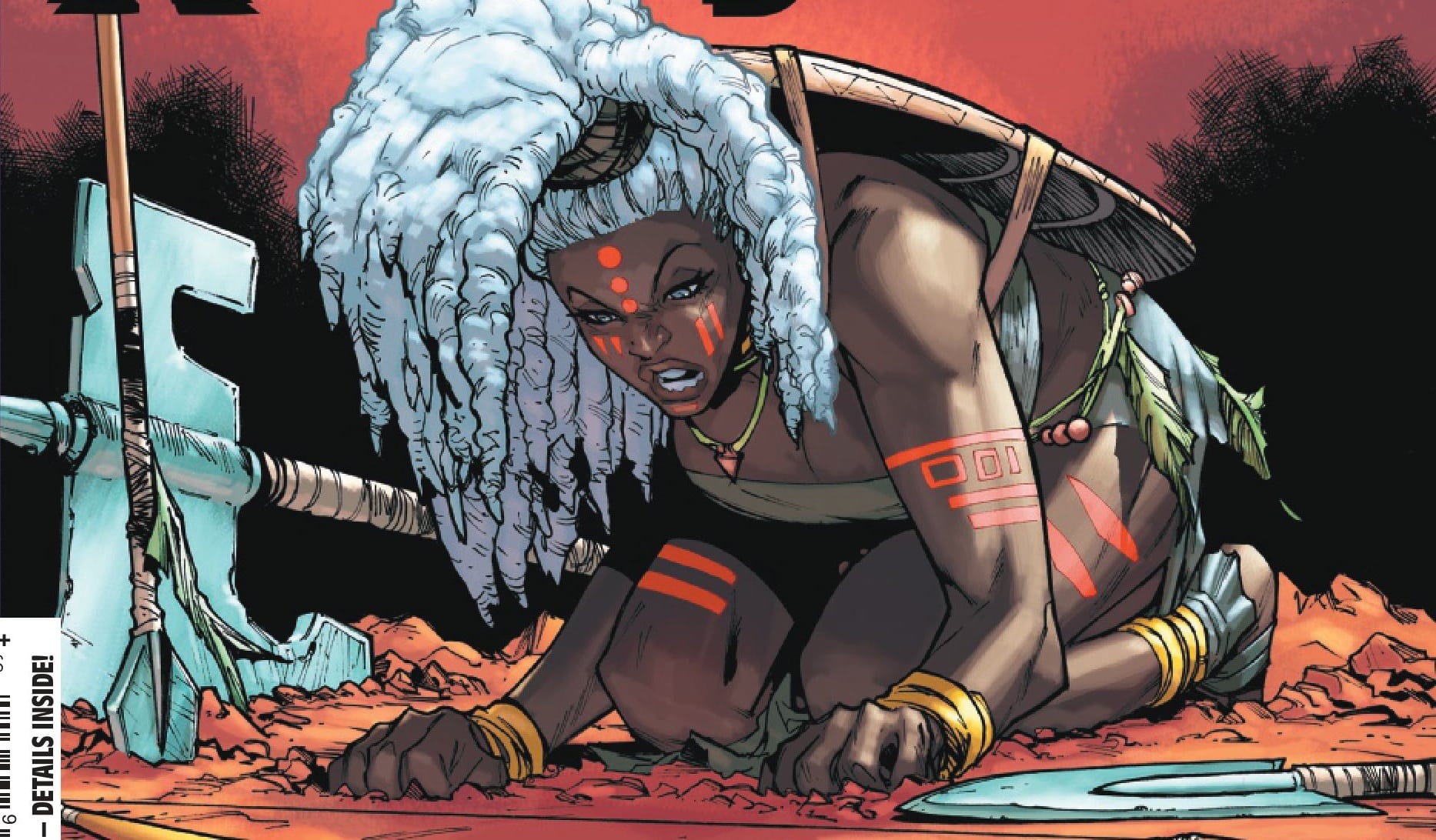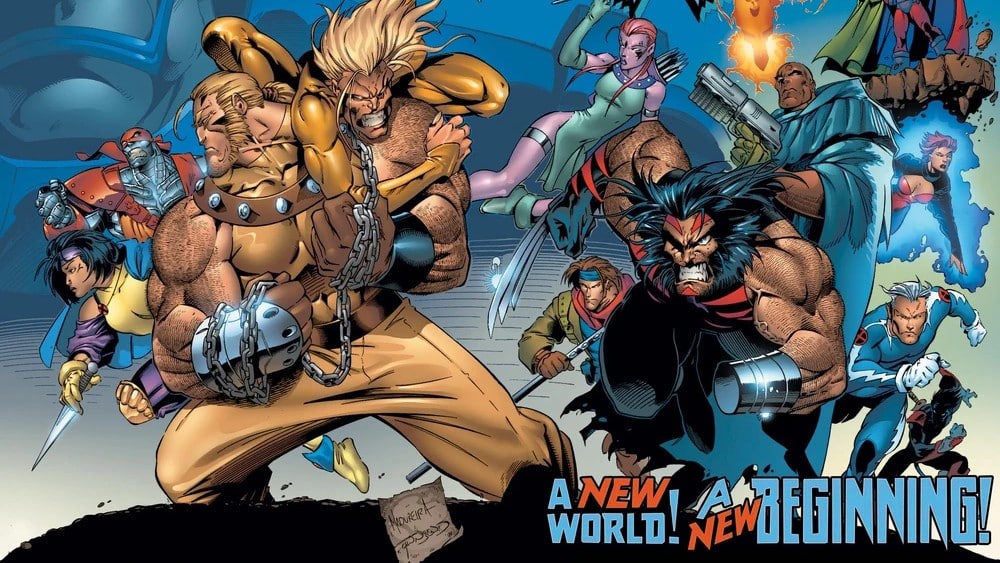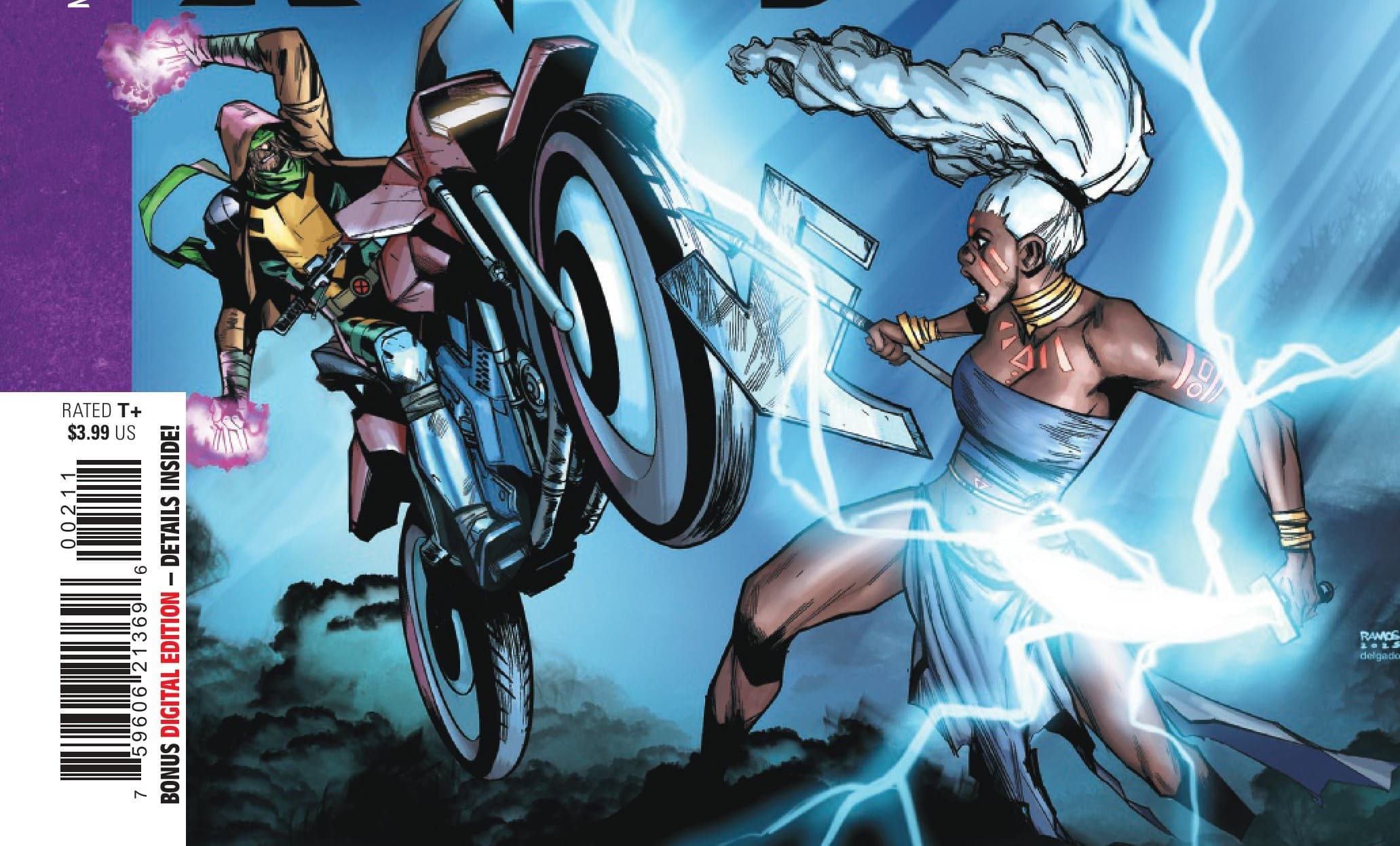The Fall of X is here.
In X-Men #25, Kate Pryde is on a mission, while the X-Men try to fight back. But is there even an X-Men any more? Written by Gerry Duggan, drawn by Stefano Caselli, colored by Marte Gracia and lettered by Clayton Cowles.
Tony Thornley: What a couple of weeks! Interestingly, I don’t think the Krakoan era has ended though, just evolved. Welcome to the Fall of X!
And since Matt is out, I’m joined by Kate Pryde expert Stephanie Burt!
Stephanie Burt: Hi. I’m angry and sad. It’s a good thing I have ninja training.
[Ed. note: Stephanie definitely does not have ninja training. We think she’s just overidentifying again.]
Shadowkat Rises

Tony: What a pair of emotionally resonant preludes. We get Kitty Pryde meeting her rabbi outside one of the New York gates from about four years ago as Kate Pryde, still in her dress from the Gala, returns to the mansion. It seems so appropriate that the beginning of the Fall of X happens where it all began, and I think it enhances the symbolism that the X-Men may be at their lowest that they aren’t returning home. They’re on the run, they’re oppressed and naturally, the Sentinels and Nimrod would check there early and often.
So Kate is the only one to return, and it’s only to recover her equipment from her time training under Ogun. After everything Kate has gone through, seeing her go dark in the wake of seeing her friends and family die is exactly what you’d expect, but I think she handles it better than we could imagine.
To have that coming right after a flashback to her admission that she still believes in God despite struggling with her faith though, that just worked for me.
Stephanie: I guess? The visual callback works well: It hurts to see how hopeful we all were, and how baffled she was, back then. That said, I have trouble believing Kate’s rabbi, or any non-Orthodox rabbi, would talk like that: “Do you still believe in God?” “God believes in you … We have to give in to her ride. There is a plan for all of us.” That’s … how priests and pastors talk, I think? I’ve never heard a rabbi take anybody in anything like that direction: The most famous work of consolation in Reform and Conservative Judaism takes roughly the opposite tack. And we know Kate wasn’t raised Orthodox.
Tony: That makes a lot of sense. And a good example of how sensitivity readers are so important when writing a perspective you don’t have.
After that opening we get to see Shadowkat, freedom fighter. Kate, and only Kate, can use the gates (i.e: Not even Synch or Rasputin using her powers would work). That gives her a tactical advantage no others see coming.
Stephanie: She’ll need it. How considerate of Ogun to write his disciple a note in English! And shouldn’t the otherwise abandoned mansion have Sidri proliferating out of the basement?
Tony: Yeah, the mansion reappeared in the Deadpool team-up arc of Wolverine with no mention of the Sidri. A little disappointing they vanished.
Stephanie: Anyway, Kate’s going to need all her powers to phase herself through the big, white blocks of narration and explanation that surround the panels in this issue. It’s one hell of a “Previously …” And it certainly sets up her take-no-prisoners turn.
Tony: Yeah, it’s not a bad issue as far as that exposition goes (I’ve read worse), but it really goes hard. Kate jumps around the world and even to Mars, assessing threats, then ends up back at HQ, where Emma asks her what happened weeks ago after the Gala.
But that flashback to the night of the Gala … Wow. It was a wonderfully illustrated action sequence (Way to go, Caselli). I’m mixed about how it works for Kate as Kate, though. But hey, we’ll talk about that in a minute.
I love seeing Synch as a leader here. Everett has grown so much as a character, from non-Scott Lobdell Generation X writers not having a clue what to do with him, to being dead for nearly 20 years of real time to a believable leader of the team.
Ms. Mutant

Tony: I love seeing Kamala Khan start to explore her mutant identity in this issue, but the bulk of what she goes through here is about erasing the events of her death in Amazing Spider-Man #25 and 26.
To be frank, I like Kamala Khan — mutant menace — as much as I dislike that the terribleness of ASM is basically all for naught. What happens here kind of makes her fridging significantly worse, as several folks said last week about her resurrection — her death didn’t need to happen. Well, now it didn’t.
Stephanie: I don’t have anything nice to say about the decision to kill off Kamala in Peter Parker’s book, so I won’t say anything you haven’t already said. I will, however, note her interaction with “Hazel Kendall,” aka Emma Frost, which ends in a place with spectacular potential and puts Kamala where she belongs: at once in the vertiginous uncertainty that belongs to adolescence, uncertain what to do next, and at the moral center of the Marvel Universe, her heart in the right place.
If only we could do something about these giant explanatory text boxes. Talk about telling rather than showing. “The mutants had fallen before, and perhaps, if they lived, they would fall again, but they were not alone this time. Steve Rogers reformed the Unity Squad. … Old Man Rogers knows the value of symbolism.” Every Marvel comic could be someone’s first, and it’s better to overexplain than to leave newish readers in the dark, but if I wanted to read a novel I’d read a novel. “The X-Men and Avengers routinely share strategy, compare notes and give each other hope.” Maybe Kamala could talk about that hope? Or show it in action in, you know, a visual medium?
Tony: Like the Forge page does remarkably effectively. Which makes all the clunky exposition frustrating.
Stephanie: Tony, what do you think about showing Scott Summers, eyes tightly shut, on a cross, being tortured? Enough? Or too much?
Tony: Just like we said about Agent Pequod in Iceman earlier in the week, I’m loving that Orchis is fully in a “villain we love to hate” mode. What I’m disappointed about is that NO ONE seems to be concerned about finding Scott. I expected Kate’s issue-ending mission to be “I’m breaking out Cyclops,” not “Kill Firestar.”
Stephanie: Are we sure Kate knows Cyclops is alive?
Tony: I mean, yeah that’s fair, but I’m sure they at least want to know what happened to him. Regardless, I am very much looking forward to Cyclops absolutely wrecking that gulag when he eventually IS freed.
Orchis: Media Machines

Tony: Dr. Stasis’ media broadcast is bleak as hell. After everything the X-Men have done for the world, I can’t imagine the general populace is falling for it. I think it’s a compelling way to show how Orchis is fighting their war. It’s not just a matter of sending nano Sentinels or false flag Captains: they’re going full media blitz.
Stephanie: You may be giving the general populace too much credit. Especially since the Sinisters may have outmaneuvered the government of Krakoa in the department of media manipulation. How many local TV stations do you think Orchis controls? This part lands hard.
Also landing hard: Kate Pryde herself, who’s come to beat the living be-something out of the Orchis goons in, of all the places, Jerusalem. I like the apparent callback to Chris Claremont and Salvador Larocca’s recent X-Treme X-Men series, which also looked back at Kate’s long-ago struggle with Ogun. Kate’s been the rising generation’s ambassador, the acceptable face of mutants, the one who could pass (but chose not to), the sweet-looking white girl who testified before Congress and represented mutantdom to — and literally from — middle America. That’s been as much her identity as her Jewishness. More than once she’s persuaded somebody — Logan, for example, and Magneto — not to kill, because killing is wrong.
But now? She’s at war. She’s done. Stefano Caselli has to draw her facial expressions in this issue over and over again, from baffled to hopeful to let down to grimly determined and kinda murdery, or — as Duggan puts it — “despondent.” And you know what? Caselli draws her real good.
Tony: I don’t love superheroes killing. But this isn’t a matter of Sprite or Shadowcat being a hero. This is Kate Pryde, a traumatized young woman who is also a ninja, former SHIELD agent and, most importantly, surrogate daughter of Wolverine. She is going to take righteous vengeance on the men who helped kill her family.
Stephanie: Duggan, whatever you think of his other plot moves, gets what makes Kate tick: She wants to defend her people, to do the right thing, she’s headstrong, and she wants to prove herself. She also likes to try out new names and costumes. Now she’s Shadowkat with a K, and she wants to “leave all the old names on the funeral pyre.” Reminds me of Magneto, who when he’s in a mood likes to tell everybody that he’s Magneto, nothing else.
Shadowkat has … turned herself into Magneto? And, understandably, wants to kill the supposed mutant traitor responsible for the fall of the best thing mutants ever had, the Krakoan experiment. Too bad she doesn’t know — because, apparently, no one left alive knows — that Firestar is a double agent acting on behalf of mutantkind, neither traitor nor Orchis mole. This issue ends even bleaker than it began — and after the Hellfire Gala, that’s saying something.
Tony: I don’t know that I liked it as a character beat, but when you view her as Wolverine’s daughter, it does make sense. She’s been pushed to the edge. She’s pushing back now, and in a way you can understand given EVERYTHING about Kate Pryde.
But like you said, the art in that whole extended sequence, it rules so much. I mean she exploded two dudes by phasing grenades in their chests. And all the carnage getting hidden by phasing out into the roof? Loved that.
X-Traneous Thoughts
- It appears the official X-Men lineup is Emma, Synch, Talon, Kate, Rasputin and Ms. Marvel (and maybe Cyclops?). I have to imagine Juggernaut is on his way too, since he’s basically the only other elected survivor.
- A later cover (for #28 iirc) does show Logan joining up as well.
- Woofer, honorary X-man, is a lot of fun.







